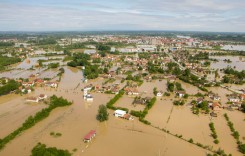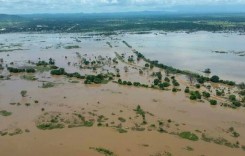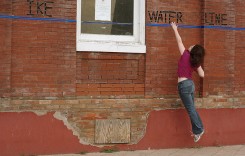Parts of North Carolina, Virginia and Maryland have recorded high levels of rainfall from remnants of Tropical Storm Julia over the last few days.
The rain has been falling since 19 September. Some areas have recorded more than 17 inches (430 mm) of rain in 72 hours.
Some roads were flooded in parts of Virginia, including Virginia Beach, Franklin, Norfolk, Suffolk, Chesapeake and Portsmouth.
However, North Carolina has suffered some of the worst of the flooding. Governor Pat McCrory said that the flooding in the north east of the state has been the worst seen in almost 20 years.
Rescues and Evacuations
North Carolina Emergency Management reported that 5 swift water rescue teams have rescued 72 people from homes and vehicles in Bertie County, and that 56 residents and 5 staff have been evacuated from a nursing home.
Around 60 homes have been damaged by flood water. Schools have been closed in 6 of the affected counties. Several roads have been blocked by flooding, including the US-13 in Windsor.
The Cashie River at Windsor reached 15 feet on 22 September, well above the 8 feet flood stage. As of the morning 23 September, levels stood at 13.45 feet and showing a falling trend.

State of Emergency
In a statement made on 22 September, North Carolina Governor Pat McCrory declared a State of Emergency for 11 counties to facilitate the movement of any resources that may be needed to respond to and recover from the storm.

The counties covered by the declaration are Bertie, Camden, Chowan, Currituck, Dare, Gates, Halifax, Hertford, Northampton, Pasquotank and Perquimans.
Governor McCrory said, “While recent tropical storms have spared most of the state, the remnants of this storm have overwhelmed many communities in northeastern North Carolina.” He added:
“This part of the state has not seen flooding to this extent since Hurricane Floyd in 1999. Our emergency management team is working with our local partners in the hardest hit areas and remains ready to assist North Carolina residents there.
“National Weather Service reports indicate rainfall amounts of five to nine inches across much of eastern North Carolina, while the Arrowhead Beach and Corapeake communities received more than 10 inches of rain. Windsor received more than 12 inches of rain in the past 72 hours.”

Floods Push Untreated Wastewater into Rivers
In Elizabeth City, the heavy rain inundated the city’s drainage and sewage system, pushing around 1 million gallons of untreated wastewater into nearby rivers. In a statement of 23 September, city officials said:
“The City of Elizabeth City had a discharge of untreated wastewater from its sewage collection system of approximately 1,000,000 gallons. The discharge occurred on September 21st and 22nd for approximately 30 hours. The discharge was the result of an extra ordinary rainfall that dumped over 10 inches of rain on Elizabeth City. The overflow from the sewer manholes ultimately entered Charles Creek in the Pasquotank River Basin.”
A similar situation occurred in other parts of the state after flooding in August 2014.








